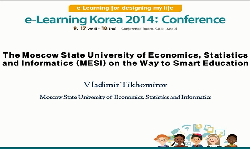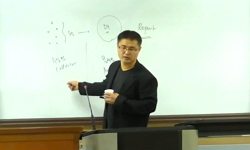Yanagita Kunio said that the folklore implies to ask scientifically what the Japanese and Japanese culture are, and is the learning in Gyeongsejemin(經世濟 民-administrating the state to relieve the people’s suffering) in order to realize a huma...
http://chineseinput.net/에서 pinyin(병음)방식으로 중국어를 변환할 수 있습니다.
변환된 중국어를 복사하여 사용하시면 됩니다.
- 中文 을 입력하시려면 zhongwen을 입력하시고 space를누르시면됩니다.
- 北京 을 입력하시려면 beijing을 입력하시고 space를 누르시면 됩니다.
https://www.riss.kr/link?id=A101720371
- 저자
- 발행기관
- 학술지명
- 권호사항
-
발행연도
2008
-
작성언어
-
- 주제어
-
KDC
300
-
등재정보
KCI등재
-
자료형태
학술저널
-
수록면
100-126(27쪽)
- 제공처
-
0
상세조회 -
0
다운로드
부가정보
다국어 초록 (Multilingual Abstract)
Yanagita Kunio said that the folklore implies to ask scientifically what the Japanese and Japanese culture are, and is the learning in Gyeongsejemin(經世濟 民-administrating the state to relieve the people’s suffering) in order to realize a human being’s happiness. Yanagita’s folklore comes to be equipped with a form in the 1930s. The development in the Japanese folklore is mostly overlapped with Yanagita Kunio’s lifetime and attitude toward learning. Yanagita’s folklore, and the Japanese folklore, which had been developed before and after the war, are not surely the same. The activation and the way of revival in folklore need to be started from what squarely looking the social issue in reality. The beginning in folkloric interest of the modern society is placed on the national studies in the Edo period. As the national studies are the culture peculiar to Japan, which was not influenced by the foreign thought, it is the learning that aims to proceed with discovering in Japanese classics or ancient history. And, what such old custom and track are remained in the middle of rural life was indicated by Motoori Norinaga, who is a great man in the national studies. Meanwhile, Sseuboi Shawgoro asserted that the origin or change in custom and convention is proved given comparing the results by carrying out the folk survey in each region because the custom and convention are recognized the extant of the previous period, from the viewpoint of anthropology in evolutionism. The Japanese folklore continued a flow of the national studies in Edo period, but is what was influenced by folklore in Sseuboi Shawgoro, who introduced British anthropology in the former term of the Meiji. The period of the birth in the Japanese folklore as the modern science is from 1910 to 1935. Japanese society was rapidly progressed the modernization by the Meiji Restoration. However, the traditional living culture was re-evaluated over 1920~1930, thus the movement of relativism in a significance of modernization was actively performed. There was suggestion through the specific case that the objective or character in activity of each field is different, but there is a significance of existence in the traditional living culture of the Rural Mountain-Fishing Villages, which had been rated just lowly with being forgotten amid modernization. In the word called ‘folk customs’, there was a feeling as the movement, which positively pushes ahead with the thought along with the expression in the position of re-evaluation on traditional culture amid a spiral of modernization. The folklore before and after the war broke with Yanagita’s folklore, thereby being able to be characterized by establishment in Japanese folklore as the independent science. However, the Japanese folklore has failed to reach the conquest of Yanagita’s folklore so far. Accordingly, the growth period of folklore can be said to be until 2000 when Miyata Noboru was dead, who made an effort to establish Japanese folklore while inheriting folklore as the learning as Gyeongsejemin(經世濟民) in Yanagita. As a subject in charge of Japanese folklore following Yanagita’s death, there is activity in university and Local Folklore Academy. And, the interest in cultural properties against a decline in folk customs caused by high economic growth boosted the energy of preparing the folk journal. Miyata was absorbed in a research from the folkloric point of time on the problem dubbed ‘women·gender·discrimination,’ which can be said to be the theme that was avoided by Yanagita, who had lived in the Meiji period. And, it is the discussion that folklore has significance in its comprehensiveness. The present folklore is being grown folklore, which is equipped with its looks, such as ‘history folklore·regional folklore·comparative folklore·religious folklore· believer folklore·Buddhism folklore·environmental folklore·urban folklore· female folklore·tourism folklore·application folklore·’ And, this segmentation in folklore can be indicated to be one trend or tendency in modern folklore· Yanagita’s folklore is said to be Japanese folklore, but it can be said to be one process of recognizing the range in ‘folk’. The range in folk can be broadened from the rotational axis. And, even the world folklore, which was told by Yanagita, got closer to possibility of realization in today, which is the information society·Beyond ‘race’·‘nation’·‘nationals’·‘class’ that are the conventional distinction in people, a concept of being globally common people, who have the sympathy in the living-culture level and the consciousness of jointly belonging as a global citizen, is required for today’s world.
동일학술지(권/호) 다른 논문
-
- 남도민속학회
- 서해숙 ( Hae Sug Seo )
- 2008
- KCI등재
-
남도민속학사(南道民俗學史) -연구동향과 동아시아에서 남도민속의 위상-
- 남도민속학회
- 이경엽 ( Kyung Yeop Lee )
- 2008
- KCI등재
-
일본민속학사 : 일본 민속학의 발자취와 전망 -야나기타(柳田) 민속학과의 관계로부터-
- 남도민속학회
- 사노겐지
- 2008
- KCI등재
-
- 남도민속학회
- 김숙희 ( Suk Hee Kim )
- 2008
- KCI등재
분석정보
연관 공개강의(KOCW)
-

Relationships for Learning: University and NQT
Teachers TV Teachers TV -

Excellence and Equity: University of Manchester
Teachers TV Teachers TV -

2014 이러닝 국제 콘퍼런스 : The Moscow State University of Economics~
한국교육정보진흥협회 Vladimir Tikhomirov -

2014 이러닝 국제 콘퍼런스: Mobile Learning Design at the University of Manitoba
한국교육정보진흥협회 Dr. Robert Lawson -

국가정보학
가천대학교 윤민우





 KISS
KISS

